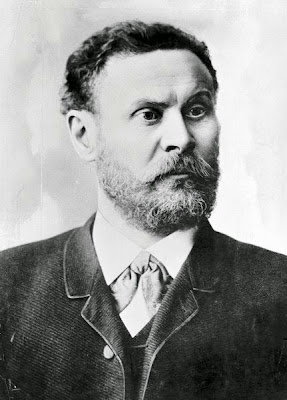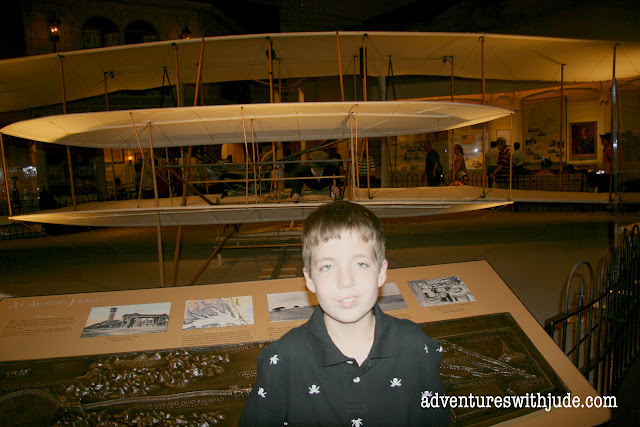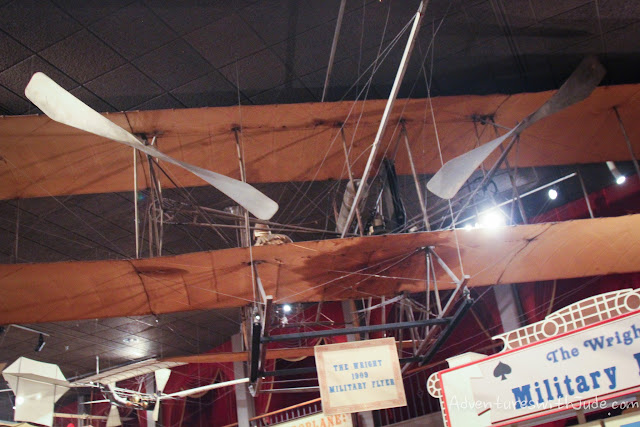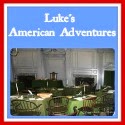Early life and experiments
 |
| Otto Lilienthal US Public Domain |
A Dream Takes Flight
The ability of the Wright brothers to analyze a mechanical problem and move toward a solution was invaluable to their work in aeronautics. The brothers identified three components to a successful flight: wings of sufficient size and shape to generate lift, a propulsion system to move the craft through the air, and a system to control the it during flight. In studying prior aeronautic engineers’ designs, they found two of them fairly well developed. Lilienthal had built wings capable of carrying him in flight, while the builders of self-propelled vehicles were developing lighter and more powerful internal-combustion engines. The final problem to be solved, they concluded, was controlling the aircraft.
Their first experiments with “wing warping,” as the system would be called, were made with a small biplane kite flown in Dayton in the summer of 1899. Discovering that they could cause the kite to climb, dive, and bank to the right or left at will, the brothers began to design their first full-scale glider using Lilienthal’s data to calculate the amount of wing surface area required to lift the estimated weight of the machine and pilot in a wind of given velocity. However the brothers soon realized that Dayton, with its relatively low winds and flat terrain, was not the ideal place to conduct aeronautical experiments. The Wrights sent a request to the U.S. Weather Bureau, asking for a list of more suitable areas. From the list in the reply, the brothers selected Kitty Hawk, an isolated village on the Outer Banks of North Carolina. It provided the perfect requirements for aviation experiments. On the island were few inhabitants (less risk of civilian casualty), high average winds, tall dunes from which to glide, and soft sand for landings.
 |
| Replica of 1900 Wright flyer On Display at the Smithsonian Air and Space Museum |
Eager to improve on the disappointing performance of their 1900 glider, the Wrights increased the wing area of their next machine to 290 square feet (26 square meters). Establishing their camp at the foot of the Kill Devil Hills, 4 miles (6.5 km) south of Kitty Hawk, the brothers completed 50 to 100 glides in July and August of 1901. As in 1900, Wilbur made all the glides, the best of which covered nearly 400 feet (120 meters). The 1901 Wright aircraft was an improvement over its predecessor, but it still did not perform as well as their calculations had predicted. Moreover, the experience of 1901 suggested that the problems of control were not fully resolved. In the end, they determined that the failure of their gliders to match calculated performance was the result of errors in the experimental data published by their predecessors. To create new, more accurate calculations, the Wrights constructed a small wind tunnel with which to gather their own information.
Even if one refused to acknowledge the brothers’ critical thinking skills, their brilliance was unmistakably obvious in the design of their wind-tunnel balances. These instruments mounted inside the tunnel and actually measured the forces operating on the model wings. During the fall and early winter of 1901, the Wrights tested between 100 and 200 wing designs in their wind tunnel, gathering information on the relative efficiencies and effects of different wing shapes, wing tip designs, and gap sizes between the two wings of a biplane. With the results of the wind-tunnel tests in hand, the brothers began work on their third full-scale glider.
 |
| 1902 Glider test flight US Public Domain |
 |
| Telegraph from Orville to his father announcing four successful flights. US Public Domain |
.jpg) |
| 1905 Wright Flyer III US Public Domain |
Making the Invention Public
With this now near-complete blackout, few believed in the Wright brothers’ success. During 1906 and 1907, a handful of European and American pioneers, armed with incomplete understandings of the Wrights’ research, struggled into the air. Meanwhile the brothers, confident that they retained a commanding lead over their rivals, continued to quietly negotiate with financiers and government purchasing agents on two continents.
In February 1908, the Wrights triumphantly signed a contract with the U.S. Army. They would receive $25,000 for delivering a machine capable of flying for at least one hour with a pilot and passenger at an average speed of 40 miles per hour. The following month, they signed a second agreement with a group of French investors interested in building and selling Wright machines under license. Returning to Kill Devil Hills in May 1908, they made 22 flights with their old 1905 machine, and modified it with upright seating and hand controls. On May 14, 1908, Wilbur took off with mechanic Charles Furnas as his first passenger. He then sailed to France. There he made his first public flight, flying over the Hunaudières Race Course near Le Mans, France on August 8, 1908. During the months that followed, the elite of the continent traveled to France and Italy to watch Wilbur fly.
 | |
| The Wright Military Flyer On Display at The Smithsonian Air and Space Museum |
Going Into Business
In November 1909, the Wright Company was incorporated. Wilbur served as president, Orville as one of two vice presidents, and the a board of trustees included some of the leaders of American business. The Wright Company established a factory in Dayton and an airfield at Huffman Prairie to train pilots. Among the Army pilots trained at the facility was Henry H. (“Hap”) Arnold, who would rise to command of the U.S. Army Air Forces during World War II. The brothers also formed the Wright Exhibition Company in March 1910, with A. Roy Knabenshue, an experienced balloon and airship pilot, as manager. Although the Wrights were not particularly interested in this sort of venture, they recognized that an exhibition team would generate a steady supplemental revenues. Orville began training pilots for the exhibition team at Montgomery, Alabama, and continued instruction at Huffman Prairie. The exhibition company made its first appearance at Indianapolis in June, 1910. However, the death of several team members in the first year of business underscored the risk in this venture, and the brothers decided to dissolve the second company in November, 1911.
Despite their brilliance, the brothers’ success was tempered by intellectual property theft. While Orville took over training pilots in 1909, Wilbur turned his energy to the legal end of the business. He brought a series of lawsuits against rival aircraft builders whom the brothers believed had infringed upon their patent rights in the United States and Europe. In Germany, the Wright claims were denied. The position of the Wright brothers was upheld in virtually every court judgment in France and America, but the defendants manipulated the legal process to avoid being forced into substantial payments. (Many of them likely had attorneys who studied case law that included how farmers skirted patent rights held by American engineer Eli Whitney.) In addition to the financial burden these suits caused, the Wrights’ spirited defense of their patents complicated their public image. Once inaccurately regarded as a pair of naive mechanical geniuses, they were now unfairly blamed for having retarded the advance of flight technology by bringing suit against other talented experimenters. Eventually, lawsuits regarding the Wrights’ patents ended; by 1917, the Wright patents expired in France and the U.S. government created a patent pool in the interest of national defense.
Orville carries on the legacy
Exhausted by business and legal concerns and suffering from typhoid fever, Wilbur died on May 30, 1912. Although Wilbur had drawn Orville into aeronautics, he had taken the lead in business matters since 1905. Upon his brother’s death, Orville assumed leadership of the Wright Company, and won the 1913 Collier Trophy for his work on an automatic stabilizer for aircraft. He remained active in the company until 1915, when he sold his interest to a group of financiers. One of the first legacies of the Wrights’ work was realized during World War I, when Orville worked as a consulting engineer. The Dayton-Wright Company planned production of foreign aircraft designs, and assisted in the development of a pilotless aircraft bomb, changing how it and all future wars would be fought. On January 27, 1948, Orville suffered a heart attack and died three days later in a Dayton hospital.
Raised in small-town Ohio, Wilbur and Orville Wright never attended college but had an innate intellectual curiosity and aptitude for science that knew few bounds. Through careful observation and experimentation, they discovered and corrected past aviators’ flaws. Together, the Wright brothers developed the first successful airplane in Kitty Hawk, North Carolina, developed innovative aeronautic technology, and changed how wars would be fought. There is perhaps no more fitting epitaph for either of the Wright brothers than the words crafted by a group of their friends to identify the 1903 Wright airplane on display at the Smithsonian:
Brothers Wilbur and Orville Wright are arguably spokesmen for the idea of the blue collar American. Considered the fathers of modern aviation, these national heroes took the concept of dream of human flight and made it soar.
Cover Image Source:
Orville Wright
Wilbur Wright
©2012- 2015 Adventures with Jude. All rights reserved. All text, photographs, artwork, and other content may not be reproduced or transmitted in any form without the written consent of the author. http://adventureswithjude.com




No comments:
Post a Comment